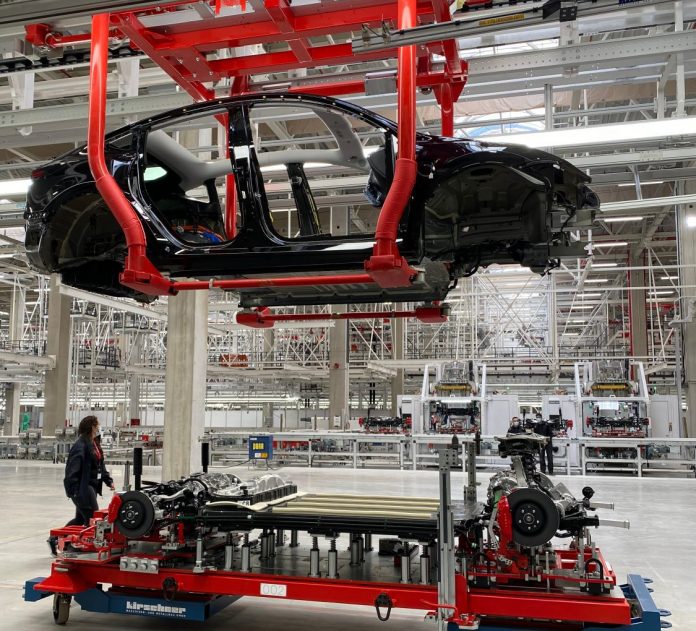According to a recent report by Reuters, the Austin-based EV manufacturer Tesla has abandoned its plan to advance gigacasting, a groundbreaking production process. This shift in strategy suggests that the EV maker is implementing cost-cutting measures due to declining sales and soaring competition.
Tesla transforms the automotive industry by employing a process called “gigacasting,” which uses massive presses capable of applying hundreds of tons of clamping pressure to die-cast significant parts of the vehicle’s underbody.
Last September, Reuters exclusively revealed that Tesla aimed to manufacture the underbody in a single piece as it developed a new small-vehicle platform. The goal was to streamline production and significantly reduce costs. However, the company has since abandoned this plan to continue using its more conventional technique of casting car underbodies in three parts: a midsection frame made of aluminum and steel that stores batteries and gigacasted front and rear sections. This three-part approach is essentially the same as what the company used to create its last two new models, the Cybertruck pickup and the Model Y crossover SUV.
Moreover, the decision to postpone the potential manufacturing breakthrough is another example of Tesla’s cost-cutting measures in response to declining sales and profit margins, a slowdown in the global EV market, and growing competition from other EV manufacturers, such as China’s BYD.
Last month, the company conducted a major downsizing, which resulted in the dismissal of over 10% of its global workforce and forced a few senior executives to resign.
Nevertheless, Tesla is shifting its focus towards developing self-driving vehicles rather than prioritizing significant growth in EV sales volume. This strategy change includes stepping back from gigacasting and halting the development of the Model 2, a more affordable car. The company now plans to produce affordable models using existing platforms and production lines. This move aligns with Tesla’s decision to prioritize simpler and faster production methods after the Model 2 cancellation, aiming for more affordable cars while continuing development on a self-driving robotaxi.




